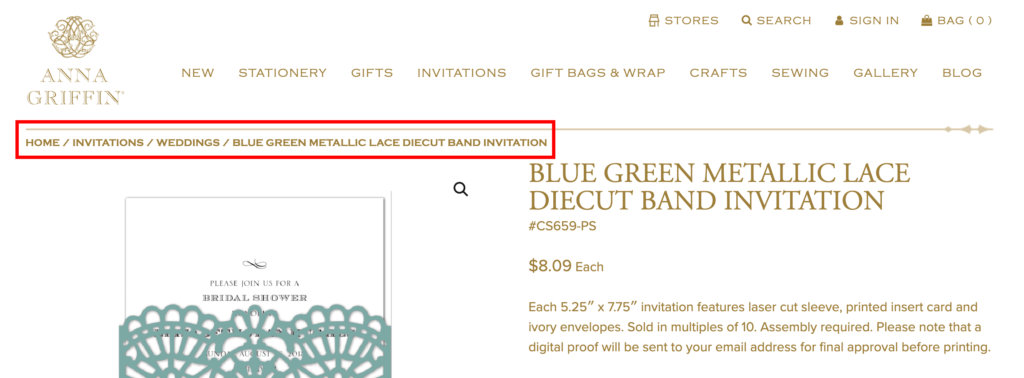We talk about enhancing the user experience (UX) a lot on this blog, and this post is dedicated to explaining the ins and outs of breadcrumbs and how they support our mission of seamless UX. Leveraging breadcrumbs will not only aid in better user experience, but it could also improve your SEO, conversion rates, traffic, and more.
Take an in-depth look into breadcrumbs and how they will improve your site’s performance.
What Exactly Are Breadcrumbs
Do you remember the tale of Hansel and Gretel? The two children leave a trail of breadcrumbs to help them find their way home as they walk through the woods. Breadcrumbs on your website serve the same purpose; they show your location on a website and offer a quick path back to a higher-level page.
Here is an example of what a breadcrumb looks like on a website (boxed in red):

Breadcrumbs are usually found in larger websites such as eCommerce sites, but they’re beneficial for websites of most sizes. These would not serve the best purpose for small websites (less than ten pages) or one-page websites, but are very beneficial on almost any other site.
Benefits of Breadcrumbs
- They’re convenient: Breadcrumbs primarily to give your users another way of navigating your website.
- They reduce clicks: Instead of clicking the browser’s “Back” button or your site’s main navigation to start their journey over, breadcrumbs can save clicks to give people a more direct path.
- They take up little screen space: As you can see from our example above, breadcrumbs are usually horizontal and plainly styled, which allows them to take up a minor amount of screen space. This means it will not take a lot of time for them to load on a page and not put the page’s design in jeopardy.
- They’re intuitive: Many websites use breadcrumbs already, which means it has become a detail that many users are used to. If you include them on your website, many people will understand them and use them correctly.
- They improve your bounce rates: If website analytics are your lifeblood, breadcrumbs help keep people on your website. For example: If someone lands on your website through Google and the page has breadcrumbs, they may feel enticed to view high-level pages to view related topics. This action will reduce your site’s bounce rate.
- They can help your SEO: A big key to ranking well on Google is making sure that Google understands your site, and this is a great way to help Google get a good feel for page structure, depth, and how your pages relate to one another.
If you want to improve your website’s performance, breadcrumbs are a great addition to have!
If you want to learn more about breadcrumbs and how they will boost your website’s success, let’s grab a cup of coffee!





